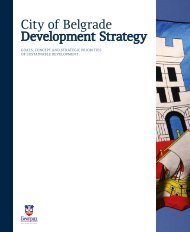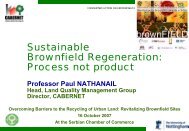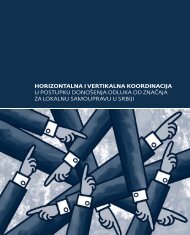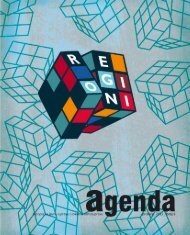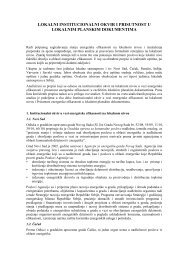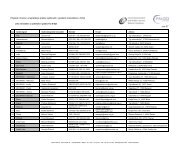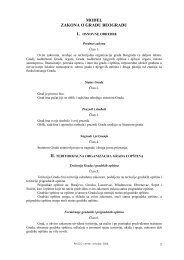Sustainable Brownfield Regeneration: CABERNET Network Report
Sustainable Brownfield Regeneration: CABERNET Network Report
Sustainable Brownfield Regeneration: CABERNET Network Report
You also want an ePaper? Increase the reach of your titles
YUMPU automatically turns print PDFs into web optimized ePapers that Google loves.
<strong>Sustainable</strong> <strong>Brownfield</strong> <strong>Regeneration</strong>:<strong>CABERNET</strong> <strong>Network</strong> <strong>Report</strong>5Regenerating <strong>Brownfield</strong>s:The Current Agenda5.4.3 RecommendationsIt is recognised that evaluating the different types of dedicated agencies found acrossEurope is difficult, due to the wide variance in structural and political climates conditions,and there may not be a ‘one size fits all’ approach. However it is recommended thatparticular aspects should be investigated further to establish whether or not thereare particular tools and models that are more appropriate or effective in certainsituations in delivering sustainable brownfield regeneration. Particular areas ofinterest include⁵⁶:1. the inter-relationships between image and perception, and role/remitof agencyGiven the importance of area perception and image in delivering brownfieldregeneration the inter-relationships between this and the precise structure, role andremit of agencies is not clearly understood. As a general rule the public sector tends toplay a much more significant role in owning/controlling dedicated delivery agenciesat the moment. The likely scale - and therefore public sector resources required -of the brownfields issue in the newly-acceded European Union states makes it vitalto understand how best to focus delivery in future. Understanding the impact ofleadership on the engagement of the private sector is for the same reason extremelyimportant.2. the relationship between geographical remit and impactGiven the wide-ranging nature of sustainable regeneration it is almost impossibleto conceive that one single agency can responsible for delivering all elements ofregeneration over a large geographical area. Evidence from identified principles ofsuccess, advantages & disadvantages and optimum model for delivery supports thisview too, as does the growth of ‘city/sub-regional’ scale agencies. The links betweengeographical remit and impact need to be understood clearly given the likely scale ofthe brownfield problem with the European Union in the near future.3. the relationship between direct control of statutory & fiscal powers,resources, etc and impactAs outlined previously there is considerable difference in the amount of control andresource available to dedicated agencies from country to country. Further evaluationneeds to be undertaken as to whether ‘rights’ such as dedicated guaranteed fundingor ‘powers’ such as direct control over planning, tax-levying, ring fencing of capitalreceipts/revenue income, etc, are essential or preferable to successful brownfieldregeneration.⁵⁶ Similar recommendations have been expressed by of other EU expert groups & networks eg. <strong>Sustainable</strong> Cities ExpertGroup on Urban Environment: <strong>Sustainable</strong> Land Use (Recommendations 8, 12 & 14), October 200193



